Article and photos by Josette King
Dilettantes welcomed customers to its elegant corner store front
A far as I can remember, Champagne was synonymous with celebration in my family. From an early age, I understood how exceptional it was: served only on special occasions, in its very own glasses from my mother’s best crystal. And it could only come from the famous region a couple of hours east of Paris that gave it its name. Everything else in thick dark glass bottles with wired corks was just mousseux (bubbly), a word best spoken with a hint of condescendence.
The map of Champagne is a mosaic of small vineyards
Later on, I discovered various major labels of Champagne, and even learned to tell the difference between their offerings. And in my travels around the world, I had many opportunities to experience local sparkling wines that ran the gamut from very nice to best avoided. So I had come to consider myself somewhat knowledgeable about Champagne; until I walked into Dilettantes (22, rue de Savoie, 75006 Paris, France, + 33 (0)1 70 69 98 68, www.dilettantes.fr, champagne@dilettantes.fr), a unique new cave (wine cellar) in the heart of Paris’ historic Left Bank, dedicated exclusively to Champagne.
Fanny Heucq introduced me to the various shapes of Champagne flutes for optimal tasting
Located on a side street of the tony 6th Arrondissement, a stone’s throw away from the Seine and the Ile de la Cité, Dilettantes is the brainchild of Fanny Heucq. Born in a family of Champagne vignerons (growers and producers) Fanny knows first hand of the wide variety of high quality Champagnes that are produced in small quantities by artisan growers and rarely available beyond their region of origin. Her goal was to take her Parisian customers past the familiar Grandes Maisons (major world-famous brands) and introduce them to these “other” Champagnes, as diverse as the vineyards and growers that produce them.
All available labels from the various artisan growers were displayed in the cellar
“I wanted to get beyond the labels to focus on the rich diversity of the crus (vineyards) and the passion of the people who work them,” she explained, nodding at the large black and white photographs that line the windows of her elegant shop. They are the weathered faces and the calloused hands of the vignerons that work the various crus showcased at Dilettantes.
Each bottle was sold with its own identification card
Fanny pointed to a map of the official growing region of Champagne, a mosaic of small vineyards scattered around a 31,598 hectare (122 square mile) area, itself divided into four terroirs (growing areas). “Depending on the soil and the altitude, a different variety of grapes will thrive,” she explained. “In the Montagne de Rheims, it’s 60 percent pinot noir and 40 percent Chardonnay. But to the west, the Vallée de la Marne is just about all pinot noir with barely 10 percent pinot meunier, while a bit to the south, la Côte des Blancs is almost exclusively Chardonnay, and down here,” she pointed due south, “La Côte des Bars is exclusively pinot noir. But the soil is harder here, the microclimates different than around Rheims, so the grapes have a different personality.” Dilettantes featured 25 artisan producers representing the four terroirs, plus a limited selection from a handful of the Grandes Maisons. I was just beginning to grasp the extent of what I never knew I didn’t know about Champagne.
A selection from a handful of world-famous brands was also available
Why Dilettantes? I asked. “Originally, a dilettante meant a passionate amateur, a connoisseur” Fanny pointed out. “Our aim was to create an environment where our customers can discover and appreciate the uniqueness of each cru.” There were many ways to “discover and appreciate” at Dilettantes. First there was the spectacular refrigerated back wall of the street level store. Multiple bottles, 1,000 in all, of the 130 labels from the artisan producers and major brands showcased at Dilettantes were stored there at 10 degrees Celsius (50 degrees Fahrenheit) behind floor to ceiling sliding glass doors. Five meters of wall-to-wall, ready to take home and enjoy Champagne.
The medieval vaulted cellar was an inviting tasting room
One floor below, the ancient vaulted limestone cellar held an inviting tasting room. Each week, three different labels representing various terroirs were featured for individual on site tasting. Additionally, each month a different grower visited the shop to introduce his or her wines. And there were also occasional thematic tastings (e.g. blancs de noirs, pink Champagnes) lead by Anne Marie Chabbert, an oenologist.
A refrigerated display wall held 1,000 chilled bottles
Whether chilled or at room temperature, enjoyed on site or at home, every bottle was sold with its own pedigree card complete with a picture of the vigneron and salient information regarding the winery, specific vineyard location, grape content, vintage, tasting notes and food pairing suggestions. There was even an entry regarding the type of flute or glass best suited to that particular bottle. I made a mental note to learn more about glasses.
Producer Sébastien Mouzon conducted a tasting of his Champagnes
On my second visit to Dilettantes, Sébastien Mouzon of Mouzon Leroux vineyards, whose family traces back to Verzy (one of the prestigious growing villages of La Montagne de Rheims) since 1780, was on hand to lead a four-wine tasting of his own labels. In addition to an in depth discussion on the particulars of each bottle and what gives it its personality, Sébastien shared a wealth of information on vine cultivation, harvesting and Champagne production. Then came the detail that consolidated the standing of Mouzon Leroux on my personal list of preferred vintners: 70 percent of their production was biodynamic (an ultra-organic wine-making method that focuses on producing naturally fermented wines from organic grapes while healing the vineyard. The biodynamic vintner treats the vines, the soil in which they grow and the surrounding flora and fauna as an interdependent ecological whole).
Dilettantes focused on artisan Champagne producers
Warning: Dilettantes is habit forming. I kept finding reasons throughout my stay in Paris to revisit the inviting cave and spent time with its pleasant, knowledgeable staff. I picked up a chilled bottle as a hostess gift on my way to a dinner invitation; I stopped by with a friend for an impromptu tasting of one of the week’s selections; and what about a set of those special tasting flutes, with a couple of well chosen bottles of course, as a housewarming gift for a friend?
All available labels from the various artisan growers were displayed in the cellar
There is always a good reason to give, and drink, Champagne. And best of all, I enjoyed that on each visit, I left the store with additional nuggets of knowledge about the many facets of Champagne. I already plan to attend one or more of the scheduled tastings on my next visit to Paris. Thanks to Dilettantes’ dedication to making high quality artisan Champagnes readily available in Paris, and educating customers to appreciate them, I may be on my way to becoming a passionate amateur.


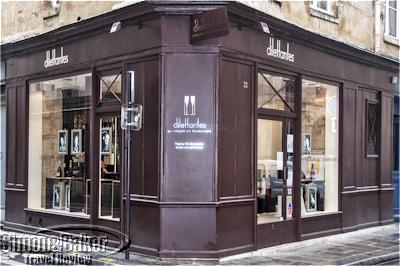
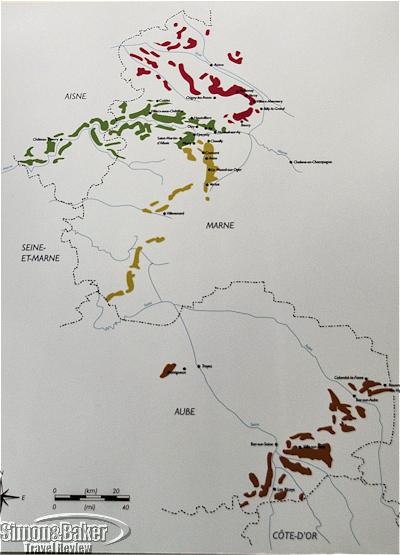
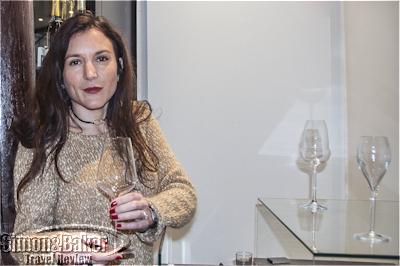

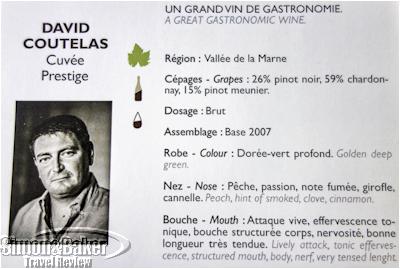
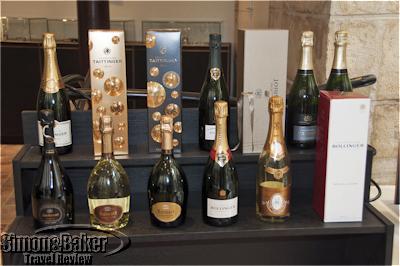
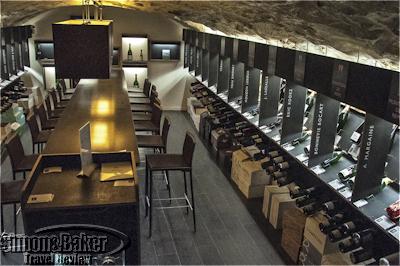

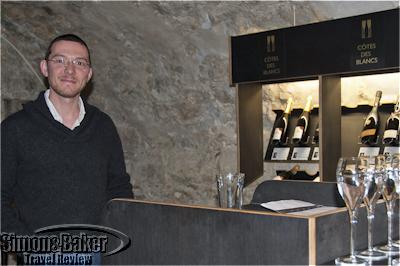
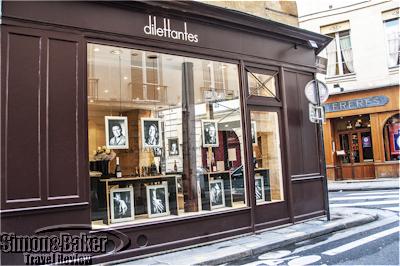
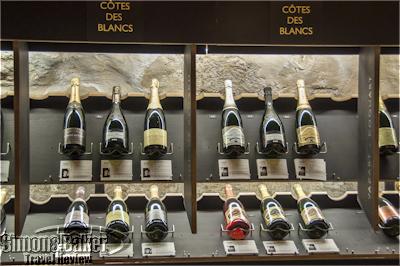







Looking forward to visiting Dilettantes in a few weeks.